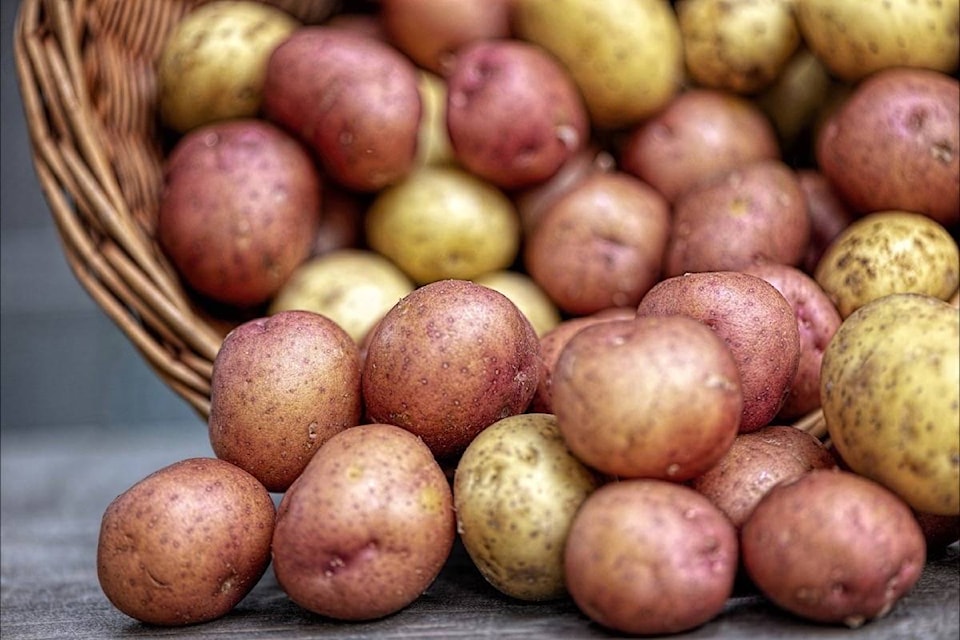Connie Kuramoto and Jeanne Keith-Ferris
Special to the Westerly
Raise a garden trowel against Covid-19 and build food security right at home. What crop has humanity turned to for food security?
Introducing the humble potato
Potatoes have sustained communities over millennia and are the fourth most cultivated crop in the world.
An easy grower in our coastal climate, spuds are nutritional power packs; productive in small containers, and a great teaching crop for new gardeners.
Kitchen cabinet surprise
Potatoes stored in your warm, dark, kitchen cabinet may have already spouted eyes. Eyes are the growing points and may have little stems sticking out representing the start of a new potato plant. Growers who buy and use special “seed potatoes” will put them in a warm, dark place to develop eyes.
Most garden books you read may direct you to purchase certified, disease free seed potatoes; and if you are growing a lot of potatoes, and growing them in the ground, that is probably the best practice. However, if you are growing just a few potatoes for your family, I cannot see the harm of using any old potato that has sprouted in your cabinet for your seed potatoes. I would reject any that are soft or black and mushy, but other potatoes, even ones that look slightly wilted will be fine, and no, they do not have to be sprouted before planting. You can start planting potatoes anytime now.
Containers and soil
Buckets work well for growing potatoes. Five-gallon sized wooden buckets, water buckets or plastic food grade buckets are ideal. If needed, drill drainage holes into the bottom. The stamped recycle number found on the bottom of a plastic bucket should have a number 2 in it if it is food safe. Even large plasticized grocery bags can be used. These types of containers will discourage evaporation and soil drying out. Fill your container to about one third full with a good potting soil mix and bagged compost in equal measure. Place 2 seed potatoes at opposite edges and cover them completely with about four more inches of soil. Now, if you have it, add some balanced organic fertilizer. For good drainage, don’t place the containers directly on the ground, but raised-up on boards. The rugged potato requires loose, well-drained soil, food, and plenty of water. It is best to water every morning, and to water until there is some drainage from the bottom of the bucket. Use about four litres of water. Mulch with leaves, seaweed, wood chips, shredded paper or cardboard to hold moisture, and shade the potato tubers from sunlight. Light exposed tubers can turn green and are inedible.
Soon you will see the potato’s green foliage emerge. When the foliage grows about one foot, then heap-in more soil to near the container’s rim. When you see flowers on the plants, potatoes have begun to form. Potatoes are ready to harvest when the tops die down. Tip the bucket over, and it’s time to eat!
Connie Kuramoto is an Organic Master Gardener and Jeanne Keith-Ferris is the president of the Ucluelet Local Food Society.
READ MORE: Gardening is balm for your soul
RELATED: Pierogi Please! Classic Polish dish is cosy, hearty and richly flavoured
